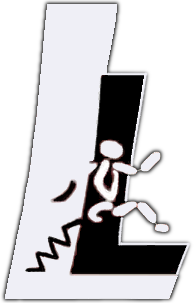Warning: Undefined array key -1 in /is/htdocs/wp1019470_OPI92FFHXV/www/_lauflabor_v3/inc/html.php on line 1458
Differences
This shows you the differences between two versions of the page.
| Both sides previous revision Previous revision Next revision | Previous revision | ||
|
publications_podcasts_pick_of_the_month [2014/02/26 18:13] 127.0.0.1 external edit |
publications_podcasts_pick_of_the_month [2014/03/20 13:59] Dario Tokur [Compliant ankle function results in landing-take off asymmetry in legged locomotion.] |
||
|---|---|---|---|
| Line 1: | Line 1: | ||
| ====== Pick of the month ====== | ====== Pick of the month ====== | ||
| + | |||
| + | |||
| + | ===== Compliant ankle function results in landing-take off asymmetry in legged locomotion. ===== | ||
| + | \\ | ||
| + | [{{ : | ||
| + | The spring loaded inverted pendulum (SLIP) model is widely used to explain basic characteristics of human walking and running. Its periodic running solutions can be mirrored at the instant of the vertical orientation of the leg and thus are symmetric between landing and take-off. In contrast, human running shows asymmetries between touchdown and take-off (e.g. shorter brake than push duration, greater mean ground reaction force during braking phase). Yet it is not fully understood whether these asymmetries are caused by asymmetric muscle properties (e.g. velocity-dependent force generation) or the asymmetric lever arm system in the human leg. We extend the SLIP model by a foot segment and a compliant ankle joint (called FSLIP). This represents the extended foot contact and the displacement of the center of pressure during contact. | ||
| + | |||
| + | The FSLIP model shows the same asymmetries as found in human running without considering asymmetric muscle properties. Together with the reversed asymmetry observed in human backward running, this indicates that the asymmetric lever arms created by the foot can cause the observed landing-take-off asymmetry in human running. | ||
| + | |||
| + | |||
| + | |||
| + | |||
| + | |||
| + | |||
| + | ====== Previous Picks ====== | ||
| + | |||
| + | ===== Pertubation Platform ===== | ||
| + | |||
| {{: | {{: | ||
| As often in Lauflabor, our hardware supplier Tetra (Tetra Ilmenau GmbH) has delivered a new piece of hardware. This time, it's a pertubation platform that can disturb human runners before, during and even after contact! | As often in Lauflabor, our hardware supplier Tetra (Tetra Ilmenau GmbH) has delivered a new piece of hardware. This time, it's a pertubation platform that can disturb human runners before, during and even after contact! | ||
| Line 7: | Line 25: | ||
| \\ | \\ | ||
| Especially, it now becomes possible to investigate the long-standing hypothesis of an elastic leg: Elasticity implies a specific change of force as a function of length change. We can now directly investigate this in an experimental setup, and confirm or decline the widespread assumption of a dominant elasticity in the human leg behavior. \\ | Especially, it now becomes possible to investigate the long-standing hypothesis of an elastic leg: Elasticity implies a specific change of force as a function of length change. We can now directly investigate this in an experimental setup, and confirm or decline the widespread assumption of a dominant elasticity in the human leg behavior. \\ | ||
| - | |||
| - | ====== Previous Picks ====== | ||
| ===== The BALANCE project has arrived ===== | ===== The BALANCE project has arrived ===== | ||




